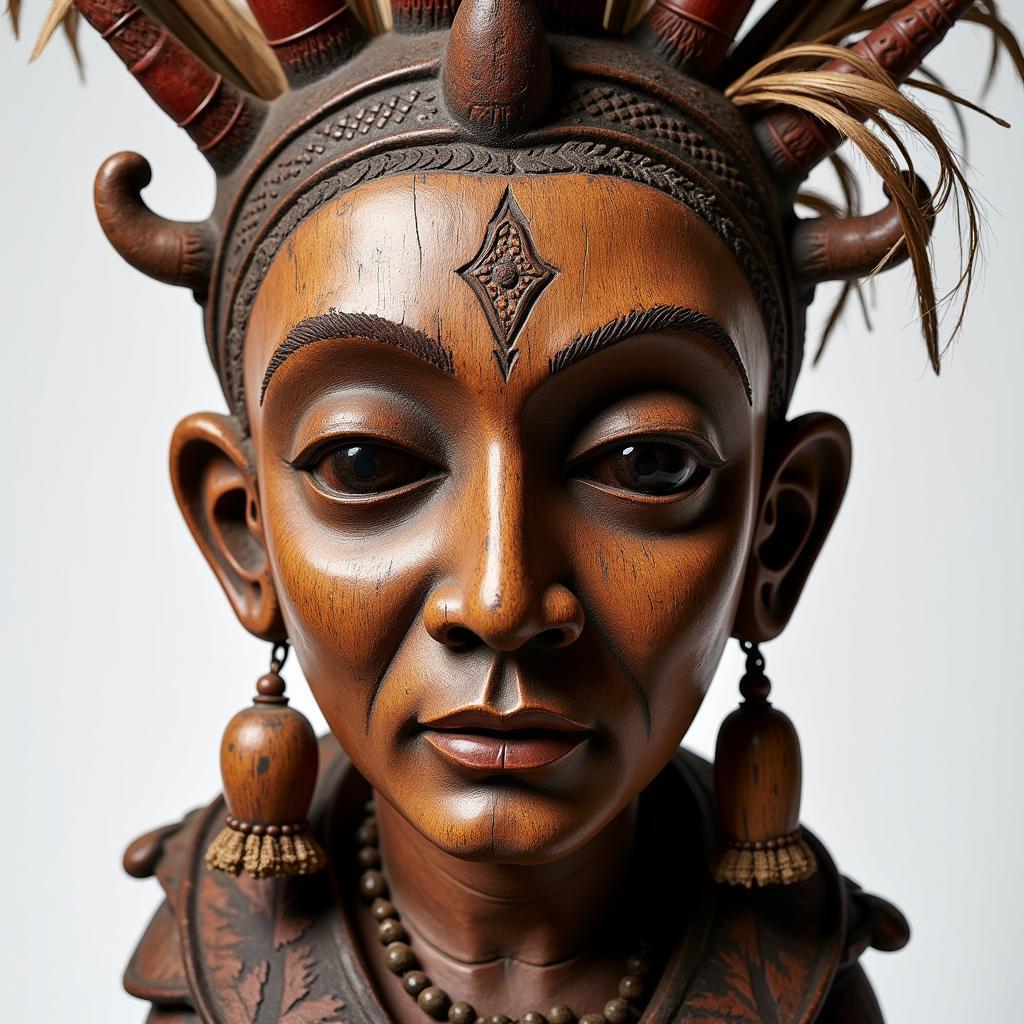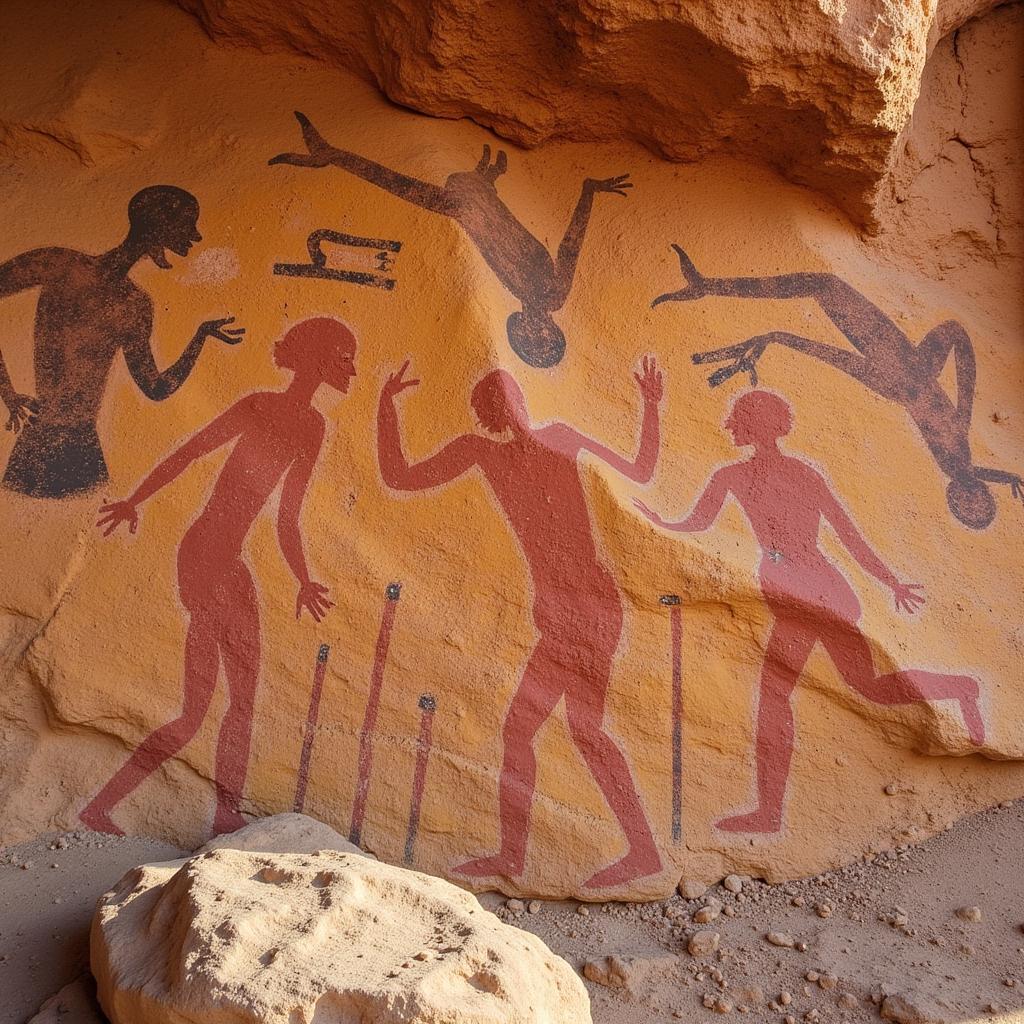Exploring African Ancestors Art: A Journey Through Time and Culture
African Ancestors Art plays a crucial role in understanding the rich history, beliefs, and traditions of diverse African cultures. From ancient rock paintings to intricately carved masks and sculptures, these artistic expressions offer a glimpse into the spiritual world and societal values of past generations. This article delves into the fascinating world of African ancestral art, exploring its various forms, meanings, and significance.
 African Mask Representing Ancestral Spirit
African Mask Representing Ancestral Spirit
Unmasking the Mysteries of African Ancestor Art
African ancestor art is not merely decorative; it serves as a powerful link between the living and the departed. These artistic creations are often imbued with spiritual significance, believed to embody the spirits of ancestors and serve as conduits for communication with the spiritual realm. They are used in rituals, ceremonies, and everyday life to honor ancestors, seek guidance, and maintain a connection with the past. For instance, masks, often seen in traditional dances, can represent specific ancestors or embody spiritual forces.
The Significance of Materials and Symbolism
The materials used in African ancestor art often carry symbolic meaning. Wood, for example, is a common material, representing the connection to nature and the cyclical nature of life and death. African dress for boys are often made with traditional patterns that reflect ancestral stories. Certain types of wood may be associated with specific ancestors or deities. Other materials, such as metal, clay, and beads, also hold specific meanings within different cultures. Similarly, the symbols and motifs incorporated into the artwork—animals, geometric patterns, and human figures—convey deeper messages about ancestry, lineage, and cultural values.
Regional Variations in African Ancestor Art
African ancestor art varies widely across the continent, reflecting the unique traditions and beliefs of different ethnic groups. From the elaborate masks of West Africa to the ancestral figures of the Congo Basin, each region has its own distinct artistic style and iconography. This diversity adds to the richness and complexity of African ancestral art, offering a multifaceted perspective on the continent’s cultural heritage. For example, the Nok culture of ancient Nigeria is known for its terracotta sculptures, while the Asante people of Ghana are renowned for their intricate gold weights. African doll craft also varies regionally, reflecting diverse cultural aesthetics and traditions.
Preserving Cultural Heritage for Future Generations
Preserving African ancestor art is essential for maintaining cultural heritage and passing down traditions to future generations. Museums, cultural centers, and private collectors play a vital role in protecting these valuable artifacts and promoting their understanding and appreciation. Moreover, supporting contemporary African artists who continue to draw inspiration from ancestral traditions helps ensure the ongoing evolution of this rich artistic legacy. Traditional african dashiki african clothing continues to be a popular way to connect with cultural heritage.
 African Rock Painting Depicting Ancestral Ritual
African Rock Painting Depicting Ancestral Ritual
Dr. Abimbola Adebayo, a renowned art historian specializing in African art, notes, “African ancestor art is more than just aesthetically pleasing objects; they are living embodiments of cultural memory and spiritual connection.”
Another expert, Dr. Khadija Mbaye, adds, “These artworks are not static relics of the past; they continue to inspire and inform contemporary artistic expressions, bridging the gap between generations.”
Professor Chinua Achebe, a respected scholar of African culture, emphasizes, “By studying these artistic traditions, we gain a deeper understanding of the complex tapestry of African history, belief systems, and social structures.” Understanding the significance of these traditions can even influence modern fashion choices, such as the african girl with blue eyes and blond hair embracing her heritage by wearing traditional clothing. African big boos girl stage dancing with her breast can be considered a modern form of expressing African culture and heritage.
In conclusion, African ancestors art offers a profound insight into the spiritual and cultural world of the continent’s diverse peoples. By exploring these artistic expressions, we can appreciate the deep connection between art, ancestry, and cultural identity.
FAQ:
- What is the purpose of African ancestor art?
- What materials are commonly used in African ancestor art?
- How does African ancestor art vary across different regions?
- Why is preserving African ancestor art important?
- Where can I learn more about African ancestor art?
- What are some examples of contemporary African artists inspired by ancestral traditions?
- How is African ancestor art connected to spiritual beliefs?
When you need support, please contact us by phone: +255768904061, email: kaka.mag@gmail.com, or visit our address: Mbarali DC Mawindi, Kangaga, Tanzania. We have a 24/7 customer service team.

